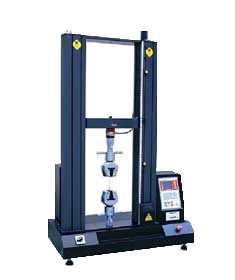-
Force measurement principles and technical requirements of Fabric Tensile Testing Machines
Edited by:Read:Fabric Tensile Testing Machines are commonly used to measure force with levers, torsion bars, pressure gauges, pendulums (lever pendulums and hydraulic pendulums when the load is high), springs and force-electric conversions (of which resistive sensors are more common). Two of them use the dynamic effect of force to measure force, and the other four use the static effect of force to measure force.
A qualified Fabric Tensile Testing Machine should meet the following requirements in order for the consumer to purchase it with confidence.
(1) Fabric Tensile Testing Machines must have a nameplate, which also contains the name, specification, accuracy level, model number, manufacturer, factory number and date of delivery of the Fabric Tensile Testing Machine.

(2) Fabric Tensile Testing Machines should be smooth loading and unloading, no impact phenomenon, hydraulic universal material testing machine shall not have oil leakage, oil seepage phenomenon.
(3) Fabric Tensile Testing Machines electrical equipment is safe and reliable, no leakage, its power line and the insulation resistance of the case > 2MQ; stroke switch sensitive; when the test load exceeds 2% ~ 5%, the upper and lower chuck move to the limit position and hydraulic testing machine work piston up to the limit position, the safety device should immediately take effect.
(4)The force measuring pendulum is not obstructed in the process of lifting, the buffer can make the pendulum return smoothly and shall not affect the pointer back to zero. (5) Fabric Tensile Testing Machines in the process of continuous loading and unloading test, the pointer operation without stagnation and jumping phenomenon, from the needle, the active needle and the inscription line coincide, the pointer should not be greater than the width of the inscription line, and parallel to the surface of the dial.
(6) Fabric Tensile Testing Machines should be installed on a solid foundation with a level of ≤ 0.2/1000 and a space of not less than 0.7mm around the machine, in a clean, dry room free from vibration and corrosive gases, with a power supply voltage variation of not more than ±1% of the rated value.
- 2024-04-19Paper ring compression strength tester standards
- 2024-04-19Cupping tester standards
- 2024-04-19Rubber and plastic tensile tester standards
- 2024-04-19Taber 1750 wear-resistant tester standards
- 2024-04-19Stone Chip Resistance Gravelometer standards
- 2024-04-18Diaper absorption speed tester standards
- 2024-04-18Diaper leakage tester technical indicators
- 2024-04-18Paint film impact resistance tester standards
- 2024-04-18Low temperature brittleness tester principle
- 2024-04-18Battery separator permeability tester technical indicators



